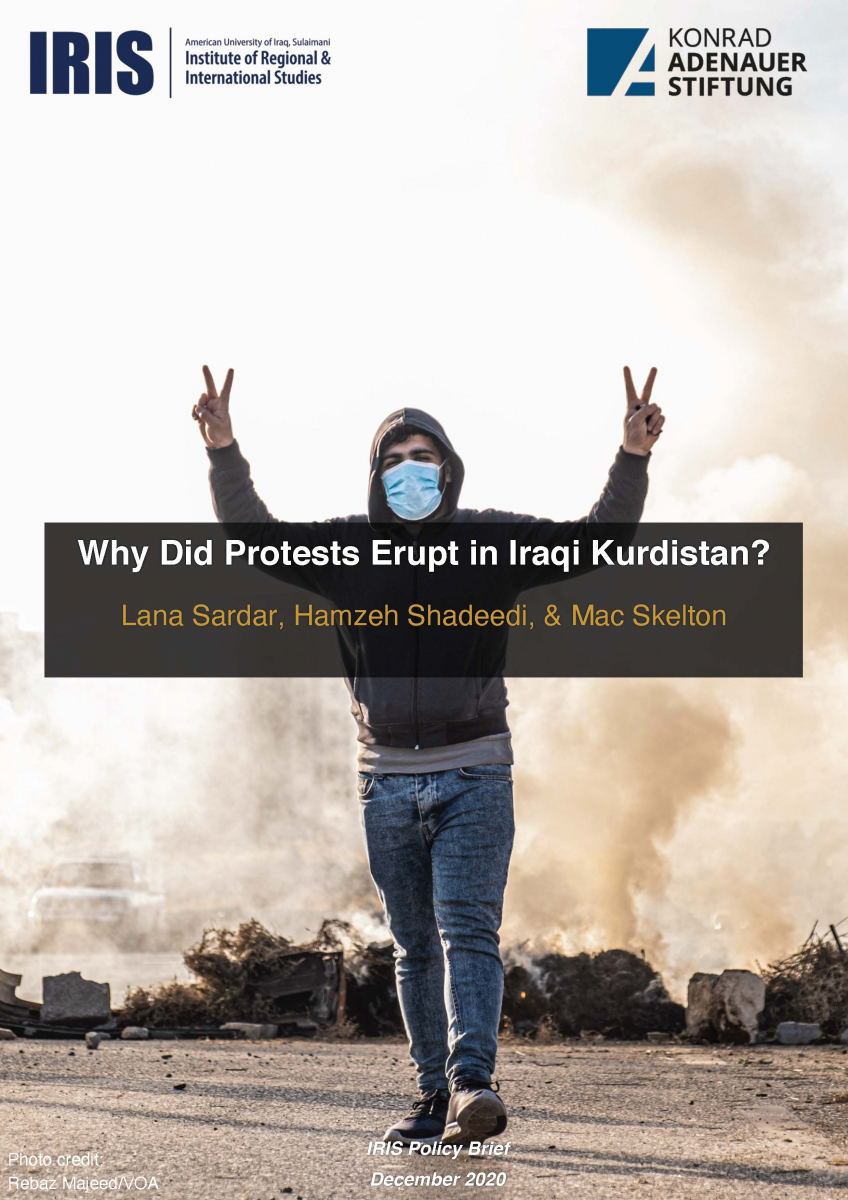In comparison to previous demonstrations in the KRI, the rhetoric of the December 2020 protests was more absolutist and its geographical scope was unprecedented. Far-flung mid-sized towns such as Kalar and Kifri witnessed some of the largest gatherings as well as the destruction of political party offices. Meanwhile, the response of the Kurdistan Regional Government (KRG) was swift and heavily securitized. Residents of Sulaimani city woke up to government Humvees deployed around the governorate headquarters in a strong show of force. Reports of the deaths of nine demonstrators in Sulaimani’s periphery and Garmian area led to calls across the region and country for security forces to be held accountable for their actions.
Why have these protests emerged at this moment? When mass demonstrations erupted in Baghdad and the south between October 2019 and April 2020, the streets of the KRI remained utterly quiet. However, under the surface of this tranquil picture, the political scene in the KRI was already becoming increasingly fraught along multiple fault lines. This brief examines three fault lines: (1) the divide between the youth and the political class; (2) the divide between the urban areas of the KRI and the periphery; and (3) the divide between the dominant ruling parties in the KRG, which in turn has fractured the relationship between the KRG and the federal government in Baghdad. Finally, this brief explores the future of the Kurdish protest movement in light of local, national, and regional developments.
Click here or on the image below for the full commentary.






